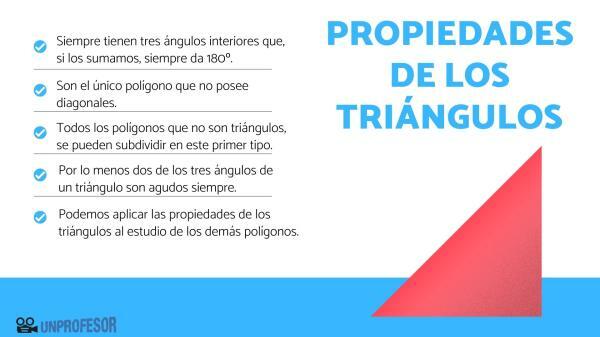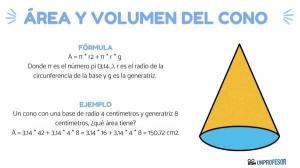Properties of TRIANGLES

Today we are going to prepare a new lesson from a Teacher. This lesson is about properties of triangles, so the previous step will be to define what we understand by triangle, in order to continue with its properties. In the end, we will see some exercise and its respective solution, to verify that what has been explained has been understood.
In geometry, a triangle is that polygon result after join three different points with straight lines, thus creating a geometric figure with three sides, three vertices and three angles that are inside the geometric figure.
Even the name of the polygon shows that the number three is fundamental for the geometric and mathematical understanding of the polygon we are studying.
Actually, the triangles are called trines, but the other name has already spread and is much more popular.
Triangles are the polygon with the lowest number of sides and angles, which is why they are considered as fairly basic figures, but they actually have numerous properties.
Here we leave you a review of the main properties of triangles:
- First, triangles always have three interior angles that, if we add them up, it always gives 180º.
- Second, they are the only polygon that it does not have diagonals.
- Third, all polygons that are not triangles, They can be subdivided into this first type. That is, a pentagon can be subdivided into triangles, a hexagon can also be subdivided into triangles, etc. The easiest way to do this is by drawing the diagonals of the polygon in question.
- At least two of the three angles of a triangle are treble forever.
- Thanks to trigonometry, we can apply the properties of triangles to study of the other polygons because, as we have already said, any polygon can be divided into triangles.
It is important to remember that there are different types of triangles, so the properties can be specific. For example, him equilateral triangle it has the three sides of the same length and the three angles of the same amplitude (60º). On the other hand, the right triangle It has a very special property, which is that the Pythagorean Theorem can be applied, which relates its three sides (hypotenuse squared is equal to the sum of each of the legs squared).

We are going to do some exercises, so you can put this lesson on the properties of triangles into practice.
1. Find the missing angle (s) in the following triangles:
- A triangle with an angle of 65º and another of 15º.
- A right triangle with an angle of 20º.
- An equilateral triangle.
2. Is it possible for a triangle to be both equilateral and right? Justify your answer.
3. How many diagonals does a triangle have?
To check that you have been able to follow the lesson correctly, we leave you here the exercises solutions previous:
1. Find the missing angle (s) in the following triangles:
Since all the triangles have 180º in total in their angles, we have to subtract 180º minus the known angles, to know the third.
- A triangle with an angle of 65º and another of 15º: 180º - 65º - 15º = 100º.
- A right triangle with an angle of 20º: as it is a right triangle, we already know that one of the angles is 90º and the other tells us that it is 20º, so 180º - 90º - 20º = 70º.
- An equilateral triangle: the three angles are 60º, because the three angles must be equal, so 180º / 3 = 60º.
2. Is it possible for a triangle to be both equilateral and right? Justify your answer.
No, since if it is an equilateral triangle, its three angles will be 60º, so it cannot have any 90º angle, as required by the right triangle. Ultimately, it is impossible for a triangle to be equilateral and, at the same time, right.
3. How many diagonals does a triangle have?
None, triangles are the only polygon that does not have diagonals.
If you found it a useful lesson, remember that you can share it with your colleagues. class or continue browsing the different lessons we offer, looking for articles in the search engine higher.



